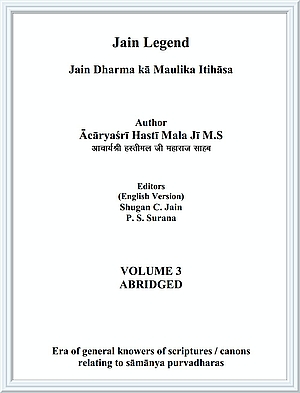In the first quarter of V.N. 13th century, a powerful king by the name Yaśovarmana ascended to the throne of Kannauja. From the writings in 'Gauḍa vaho' by Vākyapati Rāja and 'Rāja Taraṃgiṇī' by Kavi Kalhāṇa of the royal court of King Lalitāditya of Kashmir detail how he Alongwith Lalitāditya of Kashmir was able to very smartly and diligently protect and retaliate the invasions by Arabs from the northern frontiers of India. Both authors had admired kingship of Yaśovarmana.
According to historians, after the death of King Harṣavardhana, last king of Puṣpabhūti lineage, the political situation in Kannauja was unstable till Yaśovarmana of Cālukya dynasty captured the kingdom of Kannauja in 700AD.
When Yaśovarmana was ruling Kannauja, the rulers of Arab had their evil eyes set on the land of Āryans i.e. India. They were determined to make India an Islāmika state like Iraq and Iran. Their forces had even captured Sindha Pradeśa. Farsighted Yaśovarmana resolved to protect India from the invasion by Arab armed forces.
It appears that, like Harṣavardhana was keen to establish a united, strong and undefeatable India from north to south and east to west under his rule; similarly Yaśovarmana, seeing the increasing threat of invasion by Arabs wanted a strong and unified central ruling powerful kingdom permanently.
It is mentioned in the official documents of China that a king of central India, cī-śī-fū -mo sent a delegation to the rulers of China about the threat of invation in north from Tibetans gradually increasing and a request seeking adequate protection forces from China. In the translation of 'Rāja Taraṃgiṇī' by Sṭena, also mentions that Kashmir king Lalitāditya also sent his representative to China requesting the Chinese to offer armed protection to him to subvert the invasions fromTibetans and Arabs. Lalitāditya also told the Chinese that he is jointly making efforts with Yaśovarmana to stop the growing invasion from Arabs and Tibetans.
Sequence of historical events also proves that from 734-735 AD, Arabs had entered the borders of Gujarat had also started mobilising armed forces to move towards Kannauja and Ujjaina. These advances by Arabs were repulsed by Cālukya Rāja Vikramāditya II with the governor / ruler of Gujarat Pūlakeśina and Rāṣṭrakūṭa king Dantidurga. As a result, the Arabs were forced to retreat towards Sindh again. At that time some differences of opinion were prevailing between Lalitāditya and Yaśovarmana and the same had taken the form of mutual aggression against each other. According to the opinion of Dr. P.C. Bagchi Yaśovarmana had even asked Chinese to arbitrate and resolve their prevailing differences?
Rājakavi Kalhaṇa, royal poet of Kashmir king Lalitāditya in his historical text 'Rāja Taraṃgiṇī' writes about the resolution amongst these two (Lalitāditya and Yaśovarmana) as follows:
'A serious mutual difference of opinion was ongoing amongst Kashmir king Lalitāditya and King Yaśovarmana of Kannauja for quite some time. This later took the form of an armed conflict. Seeing the armed conflict taking a serious turn, they both decided to call a truce. A document giving the terms of truce was also prepared but title of the document saying, 'Truce agreement between Yaśovarmana and Lalitāditya irked the adviser of Lalitāditya. He questioned the logic in writing the name of Yaśovarmana first. Both sides disagreed to write the name of their king as second. The dangerous consequence of this minor point and bickering about it was that the truce was called off. Even though the chief of Lalitāditya's army was tired of the prolonged armed conflict, still the fight between two powerful kings with the same objective of making a unified and strong India continued with serious consequences.'
Proceeding further to write the final outcome of this war, Kalhaṇa says, 'Lailtāditya defeated Yaśovarmana and destroyed him totally.' Thus the dream of building a unified and strong India was shattered. It was a very unfortunate development for India that the hollow ego of two kings and the short sighted bickering between their foolish ministers resulted in destroying the big armies in mutual conflicts which otherwise could have jointly come to the rescue of India in bad days.
 Acharya Hasti Mala
Acharya Hasti Mala
